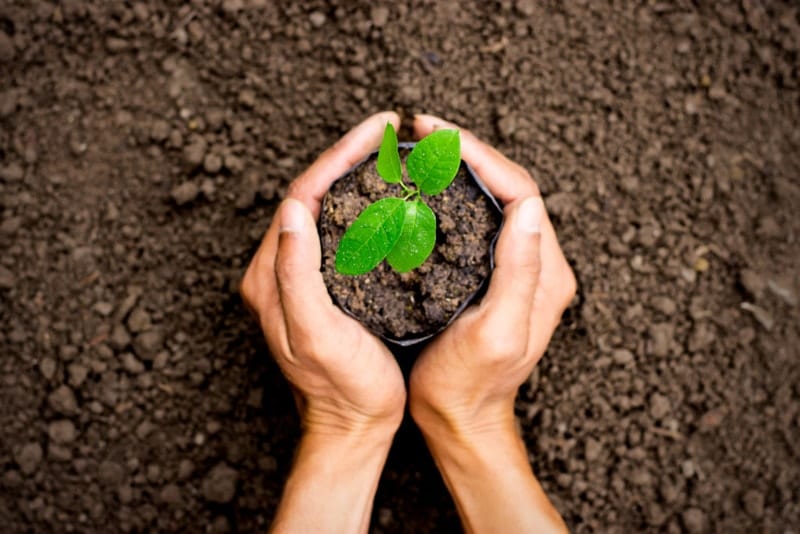Best Time to Transplant Plants Reconfiguring your garden and transplanting your outdoor plants allows you to plant some new plants and move the existing ones to a better location. Relocating your garden and landscaping gives you an opportunity to replant your old plants and relocate your current plants to a better area. Replanting your older plants is a significant event in the plant’s life cycle as it digs up storage areas and gets a new home.
For some plants, to rebloom, replanting is essential. Plants like peonies, daylilies, and bearded irises need to be separated and transplanted. You don’t have to do it every year, but at least every three years. After replanting, it takes them some time to recover to normal function.
Transplanting helps spread the wealth in your garden, so you need to tread carefully to get the desired result – a garden full of thriving plants.
The Best Time To Transplant plants
Timing is crucial, and as a general rule, you should transplant your plants before the blooming cycle to get the best results. If a plant blooms in spring, make your move very early before it even starts growing petals.
A better technique is to wait until doing the blooming is over. This is a Best Time to Transplant Plants . Some early bloomers are hardy plants so that they can be transplanted in the fall. For summer-blooming beauties, the best moving time is in the fall, as well. The best time to transplant a tree is during the middle of the day or just before the sunsets. The bottom line is – the worst season to move plants is summer!
Transplanting Seedlings
Replanting seedlings is fairly simple as most seedlings are small and easy to move. Your first step is to prepare the hole in the ground, which should be twice as wide as the pot the seedling comes in and of the same depth. If the soil is too compact and hard, add some potting mix or fertile soil. Carefully remove the seedling from the pot, making sure you support the stem all the time, and gently shake the roots to loosen them. Place the seedling in the new hole and fill it with soil and compress it down to eliminate any air pockets. Give it a good watering, and you’re done!
Best Time to Transplanting Annual Flowers
Annual flowers are very easy to transplant. Small plants, like marigolds, impatiens, or annual petunias love warm weather and are eager to grow. They are typically sold in plastic four- or six-packs, so just make sure you leave enough room for them, and they’ll start to grow. The best time for transplanting annuals is in the spring after the last frost date predicted in your region. It’s also beneficial to do it early in the morning before the day heat starts.
Prepare your garden hole or pot first and then take the little plants out of the package, loosen up the roots gently and place them in the ground. Compress the soil around them and then water them gently. Despite lasting for only one season, these annuals offer so much beauty and joy that all the transplanting work is worthwhile!
Best Time to Transplanting Perennials
Spring is a good time to transplant perennials, and it’s best you do it on a cloudy day, early in the morning or late in the afternoon. This gives the plants enough time to settle in out of the heat and direct sunlight.
The important thing to bear in mind when transplanting perennials such as daylilies, for instance, is to keep them well-watered. The soil shouldn’t be soggy but rather slightly moist. Your next step is to dig up your perennial plant and divide it. Place each division in a pre-prepared spot elsewhere in your garden, wherever it is you want to see it bloom and thrive next. Compress the soil around it and water it again. As a way of preserving moisture in the soil and keeping the weeds at bay, spread a layer of mulch around your plants.
Read Also : Prepare your garden fall
Transplanting Vegetables

Your green veggies and lettuce can be transplanted in early spring, while the days are still cool since they’re not affected by a light frost. The best timing would be early morning or on a cloudy day to avoid direct sunlight. As with other plants, this strategy protects them from sun exposure as they transition from pots into the soil. Carefully select more sensitive vegetables for transplanting when the temperature rises so you can efficiently work in the garden in short sleeves. Then you plant tomatoes, peppers, and cucumbers.
For all transplants to be successful, it’s important you help their transitioning process to be as smooth as possible. Be gentle and strategic, water them carefully and as the season progresses, your plants will grow and thrive. Your garden will quickly look amazing and abundant!
In conclusion, the best time to transplant most plants is in early spring or late fall. If you are unsure when the best time to transplant your plants is, consult a gardening expert or local nursery.





Leave a Reply